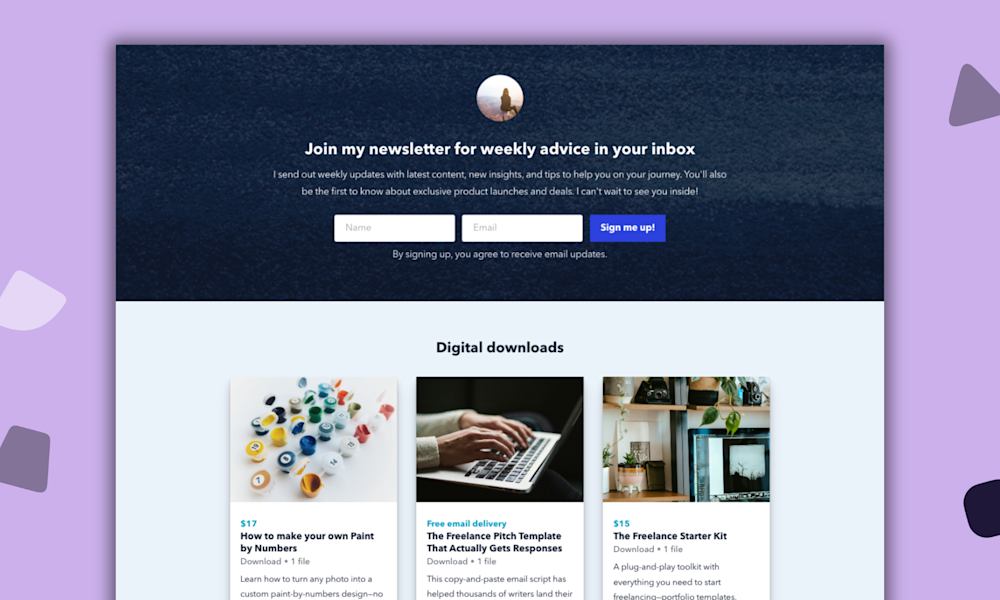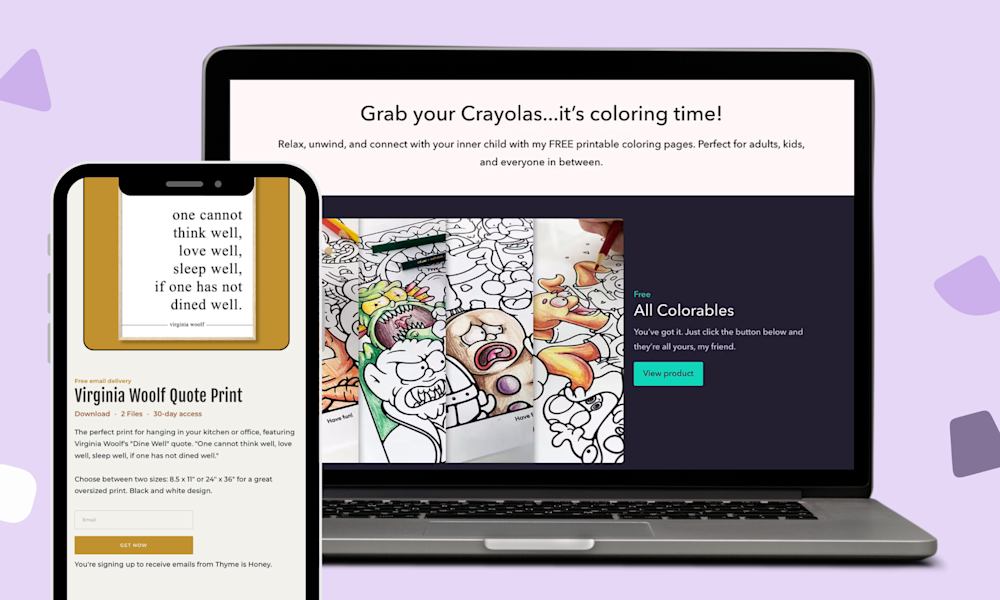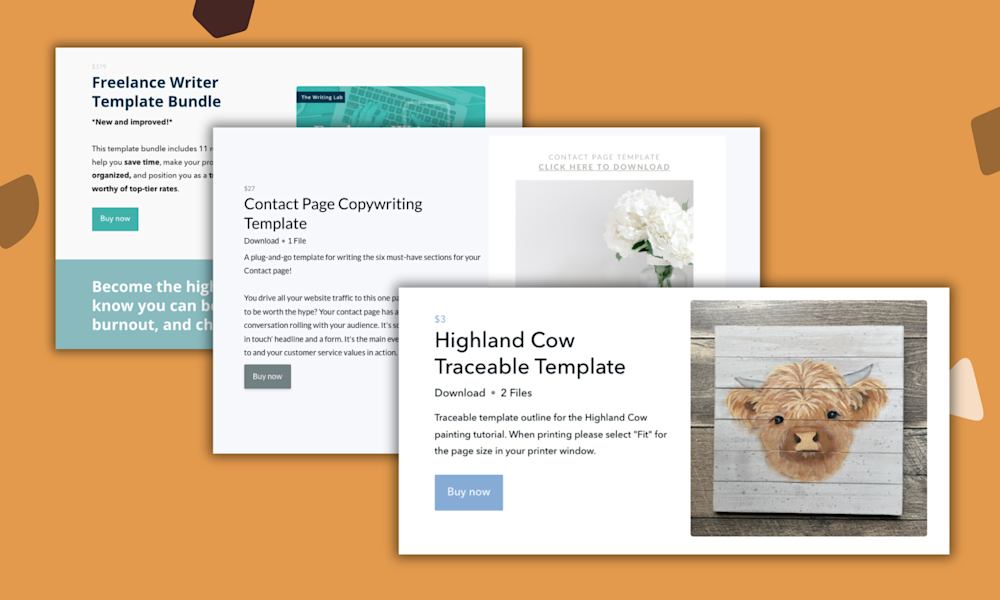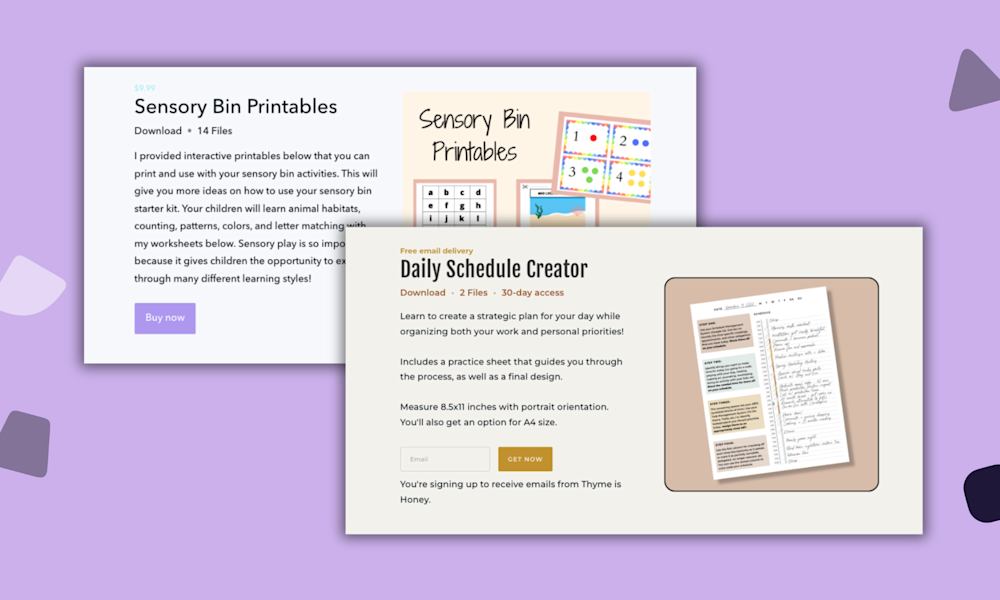It’s never been a better time to start selling digital products.
Creators are joining the creator economy and earning their first online dollar by the millions. And they’re doing it by selling profitable digital products like online courses and digital downloads.
If you’re new to online entrepreneurship, creating and selling digital downloads is a great place to start. Digital downloads can help you grow your audience, share your expertise, and make money.
Let’s start at the beginning: What type of digital download should you sell?
What kind of digital download should you sell?
Before you choose what type of digital product to sell, you need to decide on a topic. Your ideal digital download topic is the intersection of your passions and your target audience’s pain points.
To choose a topic, make a list of your interests and areas of expertise. What topic are you the “go-to” person for when your peers, friends, or family have questions?
Next, conduct customer research to learn more about your target audience. What questions do they have? What problems are they trying to solve? Are they willing to spend money to solve those problems?
Once you have some ideas in mind, use the Passion/Profit Matrix to figure out which topic to run with.
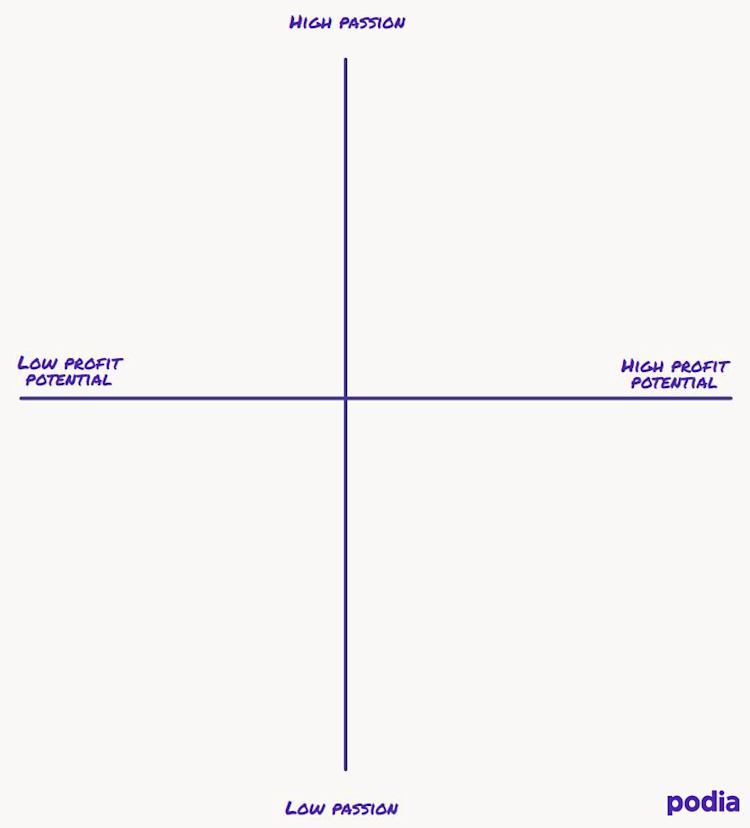
The Passion/Profit Matrix helps you answer two questions:
-
Passion: How excited are you about this topic?
-
Profit potential: Will people spend money to solve this problem?
Your ideal digital download topic falls in the upper right quadrant: The one that you’re passionate and knowledgeable about and that you’ll be able to turn a profit from.
Once you have a topic in mind, you’re ready to choose a digital download type. The format of your digital download depends on the topic and your audience’s goal.
For example, if you help people learn how to manage their money, a budget worksheet would make an excellent digital download. On the other hand, if your goal is to help home chefs master their knife skills, you could sell downloadable video tutorials demonstrating different cuts.
Some of the most popular digital downloads to sell online include:
-
Ebooks and guides on your area of expertise
-
Templates, presets, and fonts
-
Graphics, illustrations, stock photos, and digital art
-
Video tutorials and webinar recordings
-
Music, audiobooks, and other audio files
-
Printables, such as calendars, cards, and checklists
If you’re looking for inspiration, check out these 19 examples of profitable digital products to sell online.
Now that you know what you plan to sell, it’s time to figure out where to sell it. That’s what our next section is all about.
Where should you sell your digital downloads? (Digital marketplace vs. your own website)
When selling your digital download online, you have two main options: Sell on a digital marketplace or on your own website.
At first, selling your digital products on a marketplace might seem like a no-brainer. The technical work is done for you. All you have to do is upload your content and start making money, right?
Not quite. Marketplaces come with their fair share of limitations, and selling digital downloads from your site doesn’t have to be as technically tricky as you think.
Here are the pros and cons of each approach, plus which option we recommend.
Selling digital downloads on a marketplace
A digital marketplace is an ecommerce website where multiple sellers can list their products for sale. No matter what your niche is, you can probably find a marketplace that caters to your interests.
Some of the most popular online marketplaces include eBay, Etsy, and, of course, Amazon.
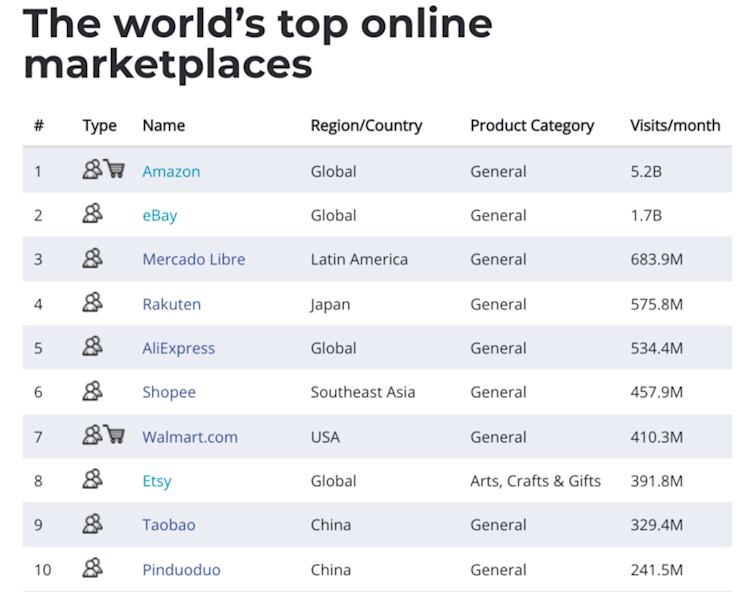
Consumers already know and trust these major marketplaces, which can be a big advantage for new online entrepreneurs.
Two-thirds of adults say trust plays a significant role in their purchase decisions, and that trust is especially important when you’re trying to grow a new business. 53.4% of shoppers are more willing to try an unfamiliar brand on Amazon than elsewhere online.
These marketplaces also bring in a ton of shoppers every day, so when you list your digital products on a marketplace, you’re getting built-in traffic. That said, high traffic can mean more competition, especially if you’re trying to stand out in a crowded niche.
The best-selling products get priority in the search results, and it’s hard to get a brand-new digital download in front of shoppers without paying for a sponsored spot.
For example, there are over 4.4 million printables available for purchase on Etsy.
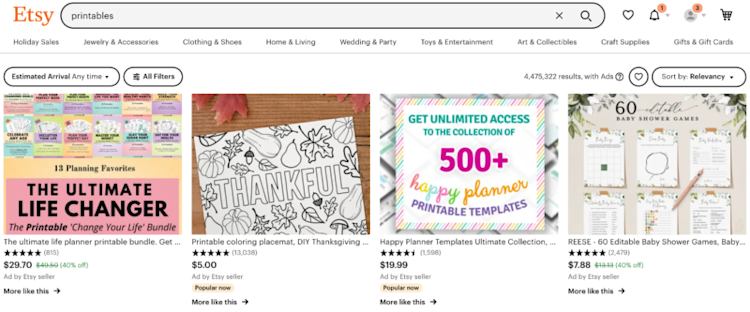
As a whole, Etsy certainly draws in more visitors than your standalone online store. But if you’re new to selling printables, standing out in a crowd of millions is a tricky endeavor.
Beyond tough competition, the biggest downside to selling digital goods on a marketplace is the fees.
For example, Etsy charges sellers:
-
A $0.20 listing fee
-
A 5% transaction fee, plus a payment processing fee
-
15% offsite ads fee for ads that Etsy posts outside of your control
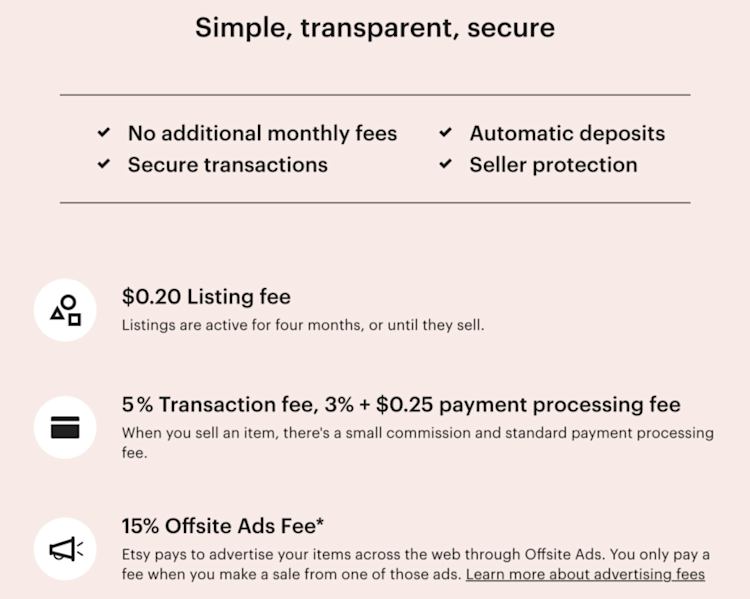
And Etsy is on the lower, more straightforward end of the pricing spectrum.
If selling on a marketplace doesn’t seem like the right fit for you, don’t worry. There are some excellent alternatives available.
Selling digital downloads on your own website
To sell digital products outside of a marketplace, you have two main options:
-
Build and sell on your own website
-
Use an all-in-one platform like Podia
If you go the DIY route, chances are you’ll be selling digital products with WordPress. WordPress powers a mind-boggling 60 million websites, and it’s incredibly popular for creators looking to start a blog or build a simple website.
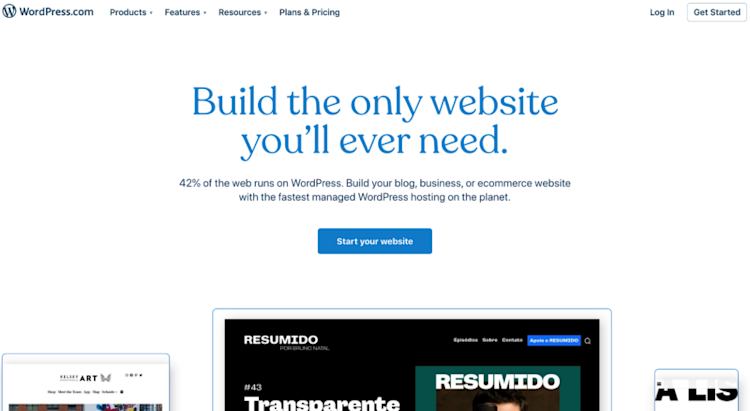
The biggest advantage of building your own website is the opportunity for customization. With hundreds of WordPress themes and plugins available, you have total control over your web design and user experience.
Unfortunately, with great website-building power comes great responsibility.
If something breaks on your website, it’s on you to fix it, whether on your own or by outsourcing the task to a third-party developer. And when it comes to building an online store, WordPress has a pretty steep learning curve, making it harder for new creators to learn.
Finally, the cost of building your own site to sell digital downloads can add up quickly.
WordPress is free, but you still need to pay for WordPress plugins, hosting, a custom domain name, and an SSL certificate to accept online payments. You also need a shopping cart plugin or ecommerce integration like WooCommerce or Shopify.
For many small business owners, you don’t have the time or budget to start from scratch. If you want to hit the ground running, an all-in-one platform like Podia gives you the best of both worlds.
With Podia, you can:
-
Host, launch, and sell digital downloads, online courses, webinars, and coaching from one dashboard, with unlimited digital file uploads.
-
Get all of the perks of using your own website to sell digital downloads, without any of the technical burden.
-
Create and easily manage a custom website without any code.
-
Build relationships with your customers through email marketing and live chat messaging.
-
Easily accept payments through PayPal and Stripe.
-
A whole lot more…

It takes just a few clicks to start selling digital downloads with Podia. Sign up for a free 30-day trial and sell your first digital download today.
OK, you have the “what” and the “where” all sorted out. You’re ready to start selling your digital download — and our next section is all about making those sales soar.
5 tips for selling and promoting your digital downloads
1. Use email marketing to spread the word
With an ROI of $36 for every $1 spent, email is one of the most affordable and effective tools for marketing your digital download.
Before you can promote your download via email, you need to build your email list. One way to encourage email signups is to offer an incentive like a discount code or lead magnet.
A lead magnet is a high-quality resource, like free downloadable content, that users receive in exchange for their email address.
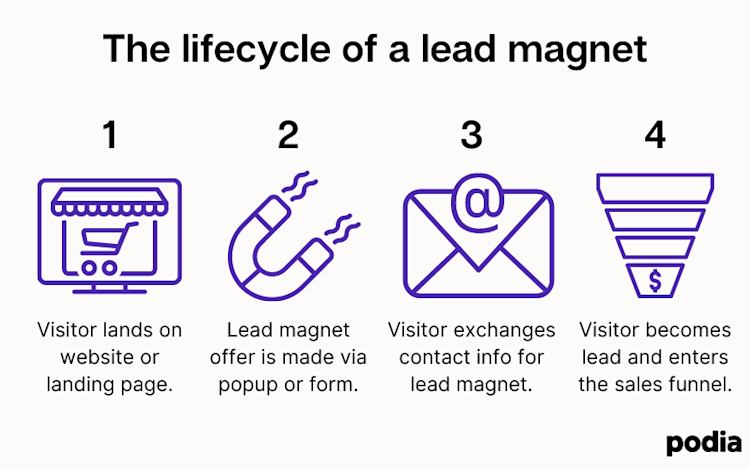
For example, Ryan of Signature Edits offers subscribers a sample pack of photo editing presets in exchange for their contact info.
For more lead magnet ideas, check out this guide to creating a lead magnet in 90 minutes or less.
Once you’ve built your email list, you can send out email campaigns to tell your audience all about your digital download.
To write high-converting sales emails, tailor your email messaging to your ideal customer’s pain points and goals. Show them how your digital download can help them achieve the results they want.
Here are some additional resources for making the most of your email marketing:
Email may be our favorite marketing channel for creators, but this next one is a close second.
2. Build buzz on social media
Social media is a solid place to build buzz around your digital downloads, especially if your target audience skews young. 59% of Gen Z and 55% of millennials discover products on social media.
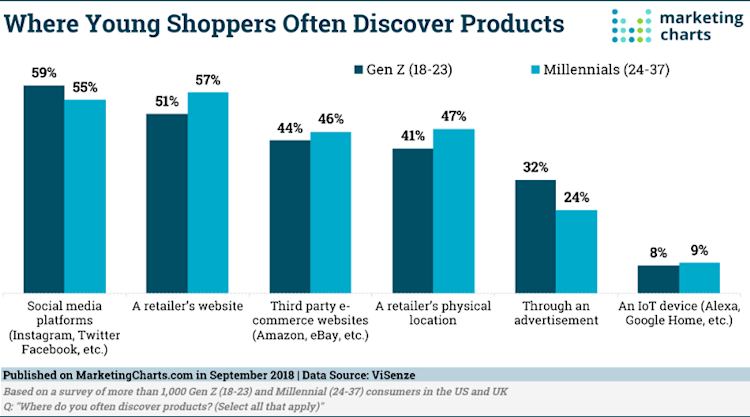
Social media works best when you combine organic and paid social media advertising.
Organic social gives you a chance to interact and build relationships with your audience and community. You might use Twitter to connect with others in your niche and discuss news in your industry or your favorite apps.
On the other hand, paid social ads help you get more eyes on your product in less time. For example, Facebook ads are a budget-friendly option for small businesses and solopreneurs looking to reach a larger audience.
That may be why over 62% of marketers say that paid social media advertising has been at least somewhat effective for their business.
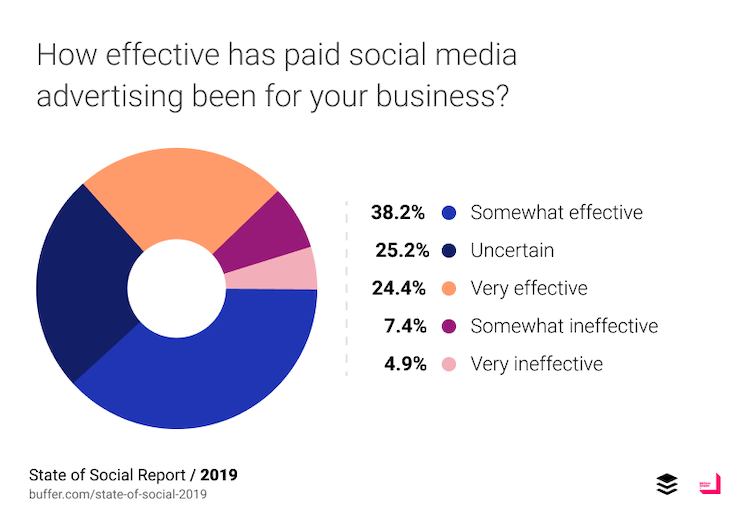
Here is an article to help you ramp up your social media marketing:
Email and social media are top-notch tools for getting potential customers to your website. Once they get there, however, it’s up to your product page to get them over the finish line.
3. Create a product page that converts
A good product page can mean the difference between a visitor clicking the “back” button or the “buy” button on your website.
Here’s the good news: You don’t have to be a professional copywriter to create a sales page that converts. You just need to help your potential customers answer, “Is this for me?”
The answer to that question is your unique value proposition (UVP): a clear statement that describes how you can solve your customer’s problem better than anyone else.
Your UVP tells visitors:
-
How your product will help them solve their problems.
-
Why they should choose it over a competitor’s product.
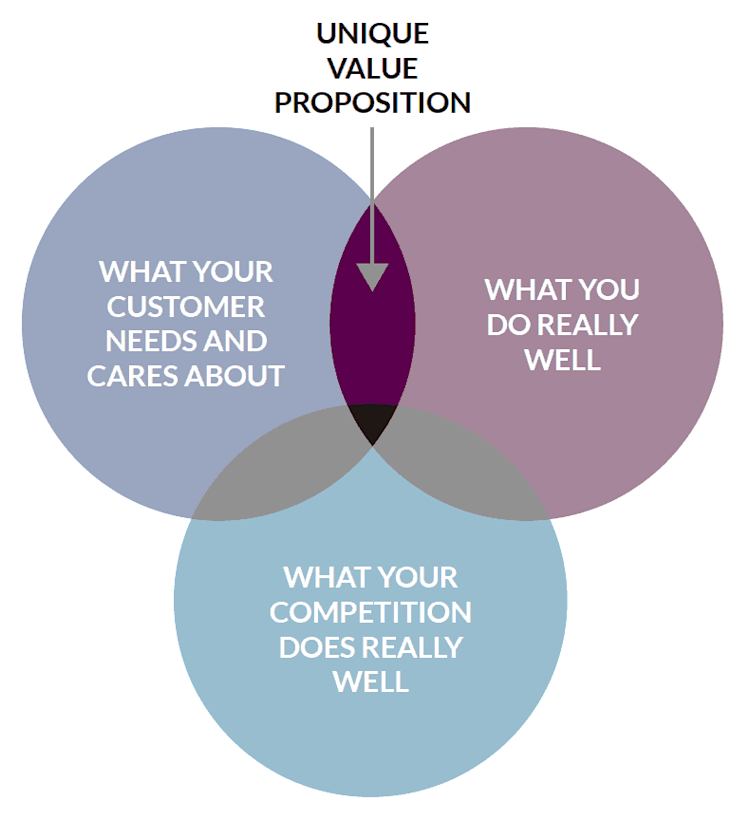
When you write sales copy, it can be tempting to include every single detail about your digital download. Instead of listing every feature, focus on benefits.
A feature is a part of your product, while a benefit is the impact that feature has on your customer. In other words, features are all about your product. Benefits are all about your customers.
Here are three more tips for writing product descriptions.
-
Know your audience. If you conducted customer research when coming up with your download idea, you have a good idea of your target audience’s goals and pain points. Refer back to that research when writing your sales copy.
-
Make it scannable. People spend an average of just 5.59 seconds looking at a website’s written content. Use bullet points and headings to break the text and stick to one clear call-to-action (CTA).
-
Optimize your product descriptions for search. Use search engine optimization (SEO) to help the right audiences discover your product organically.
The product page for No-Code MVP’s online course is a stellar example of sales page copy.
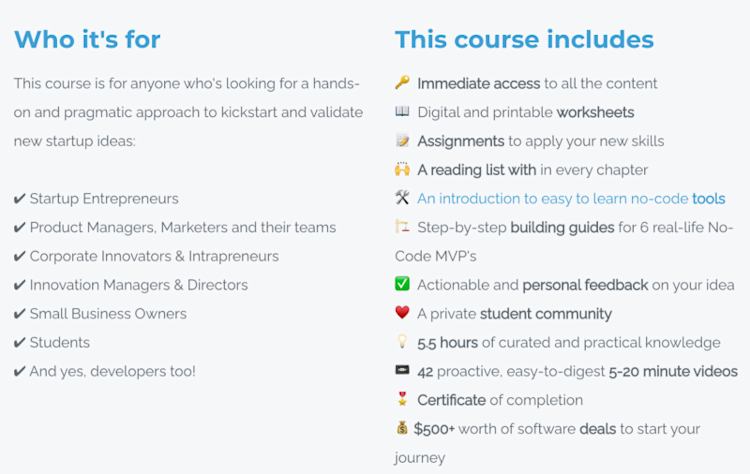
No-Code MVP uses scannable copy and clearly stated benefits to help readers answer, “Is this product right for me?” And the use of bulleted lists, emoji, and bolding keep the content more engaging and easier to read than a block of text.
Alright, our first three tips get customers ready to buy your digital downloads. Once those customers get to the checkout process, our fourth tip can help you bring in more income.
4. Sell more downloads with upsells and cross-sells
Upselling and cross-selling are powerful ways to sell more downloads and boost your bottom line.
Upselling is when a business recommends a customer buy a more advanced or feature-rich version of a product during checkout. On the other hand, cross-selling is when you recommend customers add complementary or related products to their cart.
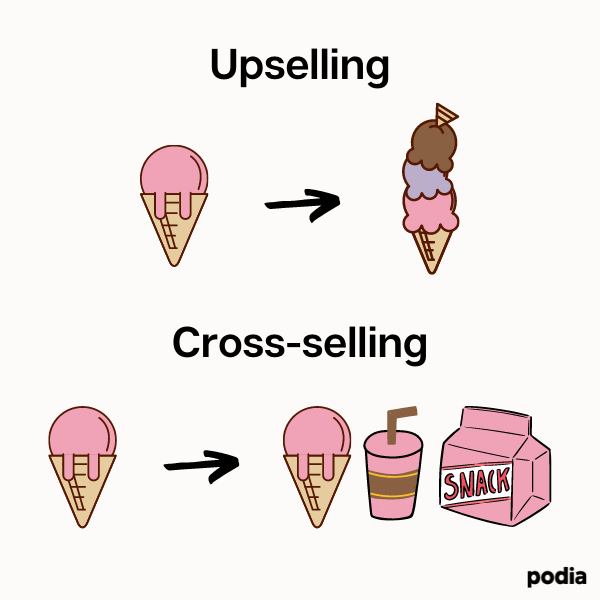
For example, let’s say that you sell a budgeting worksheet. You could add an upsell at checkout by encouraging customers to purchase a product bundle featuring the worksheet and a budgeting tips ebook, rather than just the worksheet.
Podia makes it easy to add upsells to your products in just a few steps. Here’s how.
On your Products page, pick the product you want to offer upsells or cross-sells for, then click “Edit”.

Go to the “Pricing” tab and scroll down until you see the “Upsells” block.
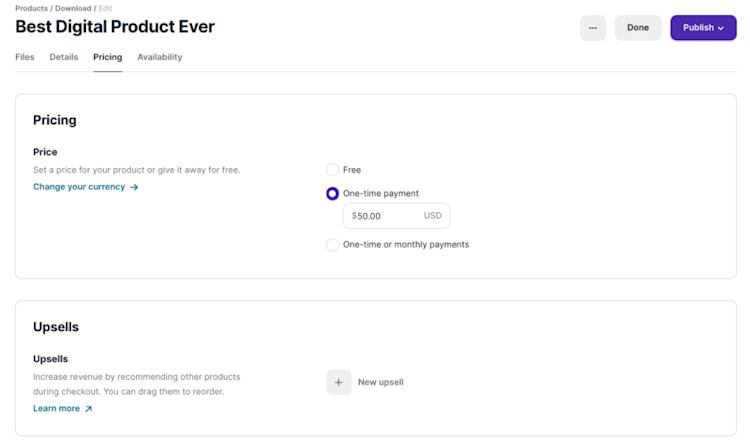
Click “New upsell”, then select the products you want to show during the checkout process and if you want to offer a discount.
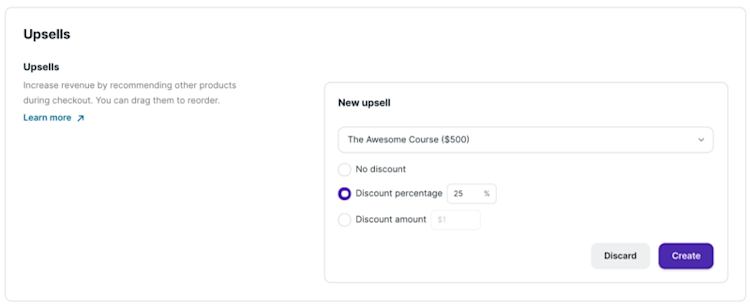
Click “Create”. Your upsell offer will appear whenever a customer tries to purchase your base product. And just like that, you’re ready to maximize your upsell and cross-sell opportunities.
Our fifth and final tip focuses on what happens after your customer clicks the buy button.
5. Ask for customer feedback
We’ve come full circle. In the beginning, you looked to your target audience to come up with an idea for your digital download. Now that your product is live, it’s time to learn from them again.
After your digital download launches, ask your customers for their feedback. The more you learn about your audience, the more you can help them succeed and continue creating valuable products.
Plus, asking for (and acting on) customer feedback can help you create a better customer experience. 90% of shoppers want businesses to give them an opportunity to provide feedback.
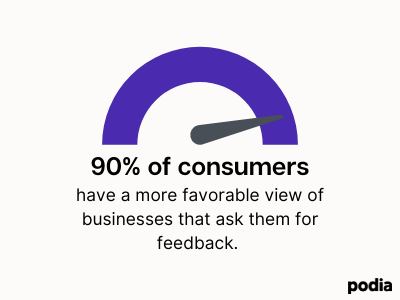
Make it easy for customers to share their feedback, whether that means hopping on a five-minute phone call to listen to their feedback or sending out another survey through Typeform or Google Forms.
If you see patterns in the feedback, consider making updates to your download, or keep those suggestions in mind for your next digital product prototype.
Collecting customer feedback in the form of reviews and testimonials can also help your bottom line.
Sales page testimonials are a powerful marketing tool. 72% of consumers say that testimonials and reviews make them trust a business more.
When you show off your customers’ results, you show potential customers, “This could be you.” The more reviews you have, the less work you have to do to convince potential customers to buy your next digital download.
For example, this testimonial on entrepreneur and mindset coach Becky Mollenkamp’s coaching page showcases the value of Becky’s product, her coaching services.

For tips on gathering and using customer reviews, check out these guides to requesting testimonials (including email templates) and displaying testimonials on your site for more tips.
With these five strategies under your belt, you’re ready to promote your digital downloads and watch your sales soar. We can’t wait to see what you create — and we’re here to help every step of the way.
